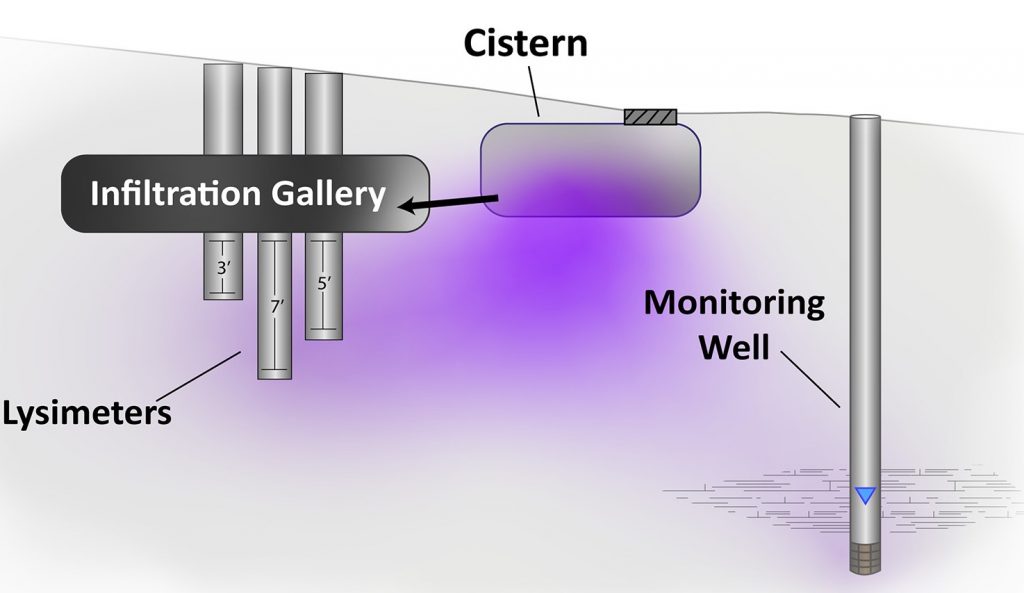by the MGWA Newsletter Team

A new study explores the relationship between microbial pathogens in urban stormwater, and what that means for groundwater in areas where subsurface infiltration exists.
Abstract: Urban stormwater may contain a variety of pollutants, including viruses and other pathogens, and contaminants of emerging concern (pharmaceuticals, artificial sweeteners, and personal care products). In vulnerable geologic settings, the potential exists for these contaminants to reach underlying aquifers and contaminate drinking water wells. Viruses and other pathogens, as well as other contaminants of emerging concern, were measured in stormwater and groundwater at an urban site containing a stormwater cistern and related subsurface infiltration gallery, three shallow lysimeter wells, and a monitoring well. Five of 12 microbial targets were detected more than once across the eight rounds of sampling and at multiple sampling points, with human-specific Bacteroides detected most frequently. The microbial and chemical contaminants present in urban stormwater were much lower in the water table monitoring well than the vadose zone lysimeters. There may be numerous causes for these reductions, but they are most likely related to transit across fine-grained sediments that separate the water table from the vadose zone at this location. Precipitation amount prior to sample collection was significantly associated with microbial load. A significant relation between microbial load and chloride-bromide ratio was also observed. The reduction in number and concentrations of contaminants found in the monitoring well indicates that although geologically sensitive aquifers receiving urban stormwater effluent in the subsurface may be prone to contamination, those with a protective cap of fine-grained sediments are less vulnerable. These results can inform stormwater infiltration guidance relative to drinking water wells, with an emphasis on restricting infiltration near water supply wells finished in geologically sensitive aquifers to reduce public health risks.
de Lambert JR, Walsh JF, Scher DP, Firnstahl AD, Borchardt MA. Microbial pathogens and contaminants of emerging concern in groundwater at an urban subsurface stormwater infiltration site. Sci Total Environ. 2021 Feb 10;775:145738. doi: 10.1016/j.scitotenv.2021.145738. Epub ahead of print. PMID: 33631564.
MGWA is committed to developing a just, equitable, and inclusive groundwater community. Click on the button below to read MGWA’s full diversity statement.